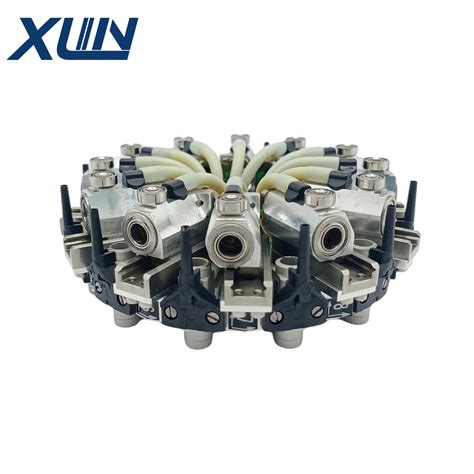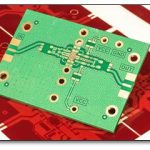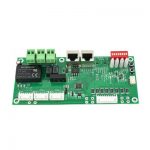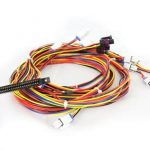Understanding SMT Chip Terminals and Their Importance
Surface Mount Technology (SMT) has revolutionized the electronics manufacturing industry by enabling the production of smaller, more compact, and more efficient electronic devices. SMT chips, also known as surface mount devices (SMDs), are essential components in modern electronics. These chips are mounted directly onto the surface of a printed circuit board (PCB) using a process called reflow soldering.
One critical aspect of SMT chip functionality is the integrity of its terminals. The terminals, also referred to as leads or pins, are the small metallic contacts that connect the chip to the PCB. These terminals are responsible for establishing electrical and mechanical connections between the chip and the board, allowing the chip to function as intended.
The Role of SMT Chip Terminals
SMT chip terminals serve several essential functions:
-
Electrical Connection: The terminals provide a pathway for electrical signals to flow between the chip and the PCB. This enables the chip to receive power, transmit data, and communicate with other components on the board.
-
Mechanical Support: The terminals also provide mechanical support to the chip, ensuring that it remains securely attached to the PCB during the manufacturing process and throughout the product’s lifecycle.
-
Heat Dissipation: In some cases, the terminals can also help dissipate heat generated by the chip, preventing overheating and ensuring optimal performance.
The Consequences of Lifted SMT Chip Terminals
A lifted SMT chip terminal occurs when one or more of the chip’s terminals become detached from the PCB. This can happen due to various reasons, such as:
- Poor soldering during the manufacturing process
- Mechanical stress or damage during handling or use
- Thermal stress caused by temperature fluctuations
- Contamination or oxidation of the terminal or PCB surface
When an SMT chip terminal lifts, it can lead to several problems:
-
Electrical Disconnection: A lifted terminal can result in a complete or intermittent loss of electrical connection between the chip and the PCB. This can cause the chip to malfunction or fail entirely, leading to device failure.
-
Mechanical Instability: A lifted terminal can also compromise the mechanical stability of the chip, making it more susceptible to further damage or complete detachment from the PCB.
-
Increased Resistance: Even if a lifted terminal maintains some level of electrical connection, it can result in increased resistance, which can affect the chip’s performance and lead to signal degradation or power dissipation issues.
-
Reliability Issues: Lifted terminals can significantly impact the overall reliability of the electronic device, leading to premature failure or unpredictable behavior.
Detecting and Diagnosing Lifted SMT Chip Terminals
Detecting and diagnosing lifted SMT chip terminals can be challenging, especially in complex electronic assemblies with numerous components. However, several methods can be employed to identify and assess the severity of the issue:
-
Visual Inspection: In some cases, lifted terminals can be detected through careful visual inspection using magnification tools such as microscopes or high-resolution cameras. This method is most effective for larger SMT chips with visible terminals.
-
X-Ray Inspection: For smaller chips or those with hidden terminals, X-ray inspection can be used to visualize the internal structure of the solder joints and identify any lifted terminals.
-
Electrical Testing: Functional testing, such as in-circuit testing (ICT) or boundary scan testing, can help identify lifted terminals by detecting electrical disconnections or abnormal resistance values.
-
Thermal Imaging: In some cases, thermal imaging can be used to detect lifted terminals by identifying areas of increased resistance or abnormal heat distribution on the PCB.

Preventing and Mitigating Lifted SMT Chip Terminals
Preventing and mitigating lifted SMT chip terminals requires a multi-faceted approach that addresses the various causes of the issue:
-
Proper Solder Paste Application: Ensuring that the correct amount of solder paste is applied to the PCB pads can help prevent insufficient or excessive solder joints, which can lead to lifted terminals.
-
Optimal Reflow Soldering Profile: Developing and maintaining an optimal reflow soldering profile, with appropriate temperature ramps and dwell times, can help ensure proper solder joint formation and minimize thermal stress on the components.
-
Adequate Mechanical Support: Providing adequate mechanical support to the SMT chips, such as using underfill material or reinforcing the solder joints with additional solder, can help prevent terminal lifting due to mechanical stress.
-
Proper Handling and Storage: Implementing proper handling and storage procedures, such as using ESD-safe equipment and maintaining appropriate temperature and humidity levels, can help minimize the risk of damage to the SMT chips and their terminals.
-
Regular Inspection and Maintenance: Conducting regular inspections of the electronic assemblies and performing preventive maintenance can help identify and address potential issues before they lead to lifted terminals or device failure.
Repairing Lifted SMT Chip Terminals
In some cases, lifted SMT chip terminals can be repaired, depending on the extent of the damage and the accessibility of the affected area. Some common repair methods include:
-
Soldering Iron: For minor lifts or single terminal issues, a soldering iron can be used to reflow the solder joint and reattach the terminal to the PCB. This method requires careful temperature control and precise application to avoid further damage to the chip or surrounding components.
-
Solder Paste and Reflow: For more extensive repairs or multiple lifted terminals, solder paste can be applied to the affected areas, and the board can be run through a reflow oven to reestablish the solder joints. This method is more suitable for larger scale repairs or rework processes.
-
Conductive Epoxy: In some cases, conductive epoxy can be used to reattach lifted terminals, especially in situations where soldering is not feasible or may cause further damage. The epoxy provides both electrical and mechanical connection, but it may not be as reliable as a properly formed solder joint.
It is essential to note that repairing lifted SMT chip terminals can be a delicate and complex process, and it may not always be possible or economically viable, especially for high-volume production or critical applications. In such cases, replacing the affected component or the entire PCB may be the most appropriate solution.
FAQ
-
What is a lifted SMT chip terminal?
A lifted SMT chip terminal is a condition where one or more of the small metallic contacts (terminals) that connect the chip to the printed circuit board (PCB) become detached or separated from the board surface. -
What causes SMT chip terminals to lift?
SMT chip terminals can lift due to various reasons, including poor soldering during manufacturing, mechanical stress or damage, thermal stress from temperature fluctuations, and contamination or oxidation of the terminal or PCB surface. -
What are the consequences of lifted SMT chip terminals?
Lifted SMT chip terminals can lead to electrical disconnection, mechanical instability, increased resistance, and reliability issues, causing the chip to malfunction, fail, or exhibit unpredictable behavior. -
How can lifted SMT chip terminals be detected and diagnosed?
Lifted SMT chip terminals can be detected and diagnosed through various methods, such as visual inspection using magnification tools, X-ray inspection, electrical testing (e.g., in-circuit testing or boundary scan testing), and thermal imaging. -
Can lifted SMT chip terminals be repaired?
In some cases, lifted SMT chip terminals can be repaired using methods such as soldering iron, solder paste and reflow, or conductive epoxy. However, the success of the repair depends on the extent of the damage and the accessibility of the affected area. In some situations, replacing the affected component or the entire PCB may be necessary.
Conclusion
Lifted SMT chip terminals can be a significant problem in electronic manufacturing, leading to device failure, reduced reliability, and increased production costs. Understanding the causes, consequences, and methods for detecting, preventing, and repairing lifted terminals is crucial for maintaining the quality and performance of electronic products.
By implementing proper manufacturing processes, handling procedures, and inspection techniques, manufacturers can minimize the occurrence of lifted terminals and ensure the long-term reliability of their products. When lifted terminals do occur, careful assessment and appropriate repair methods can help salvage affected components and minimize the impact on production schedules and costs.
As electronic devices continue to become more complex and compact, the importance of addressing lifted SMT chip terminals will only continue to grow. By staying informed about the latest techniques and best practices for preventing and managing this issue, electronics manufacturers can maintain a competitive edge and deliver high-quality, reliable products to their customers.
| Cause | Detection Method | Repair Method |
|---|---|---|
| Poor soldering during manufacturing | Visual inspection, X-ray | Soldering iron, solder paste and reflow |
| Mechanical stress or damage | Visual inspection, electrical testing | Soldering iron, conductive epoxy |
| Thermal stress from temperature fluctuations | Thermal imaging, electrical testing | Solder paste and reflow, replacement |
| Contamination or oxidation | Visual inspection, electrical testing | Cleaning, soldering iron, replacement |
Table 1: Common causes, detection methods, and repair methods for lifted SMT chip terminals.






Leave a Reply